Each year, the marine industry times its most exciting new-product releases to coincide with the fall and winter boat shows. For sailors, these expos are a chance to talk to the experts, try out new features and buy gear for the season ahead. Here are some of the coolest new kits you can expect to find on display.
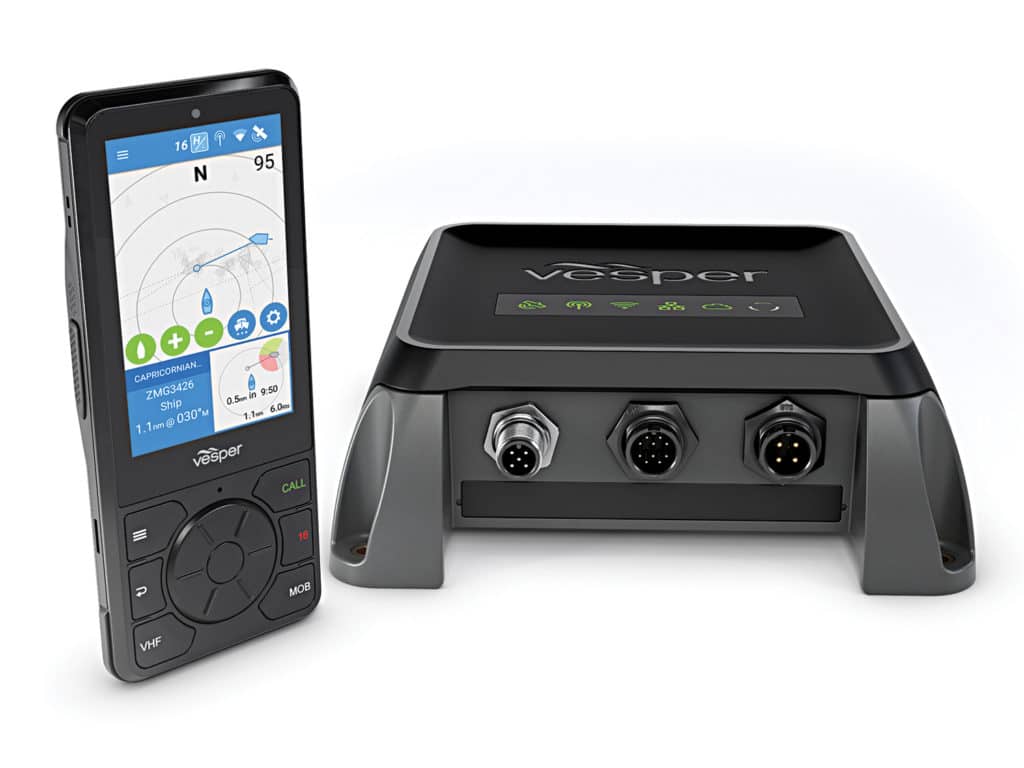
While good editors never play favorites, it’s tough not to be impressed with Vesper Marine’s Cortex safety and communications platform, which has been turning heads since its introduction this past fall. Somewhat akin to how smartphones revolutionized personal and business communications by creating an all-in-one device for email, SMS, phone calls and apps, Cortex simplifies VHF radio operations and delivers Automatic Identification System, Digital Selective Calling and Wi-Fi communications to a smartphone app or dedicated handset. A base package starts at right around $1,300.
Out on the water, sailors can simply tap the onscreen icon of nearby AIS-equipped vessels to place VHF or DSC calls, and—much like Vesper’s other AIS products—Cortex employs smart-alarm logic to prioritize AIS targets and deliver anchor-drag and MOB alarms, both on and off the boat.
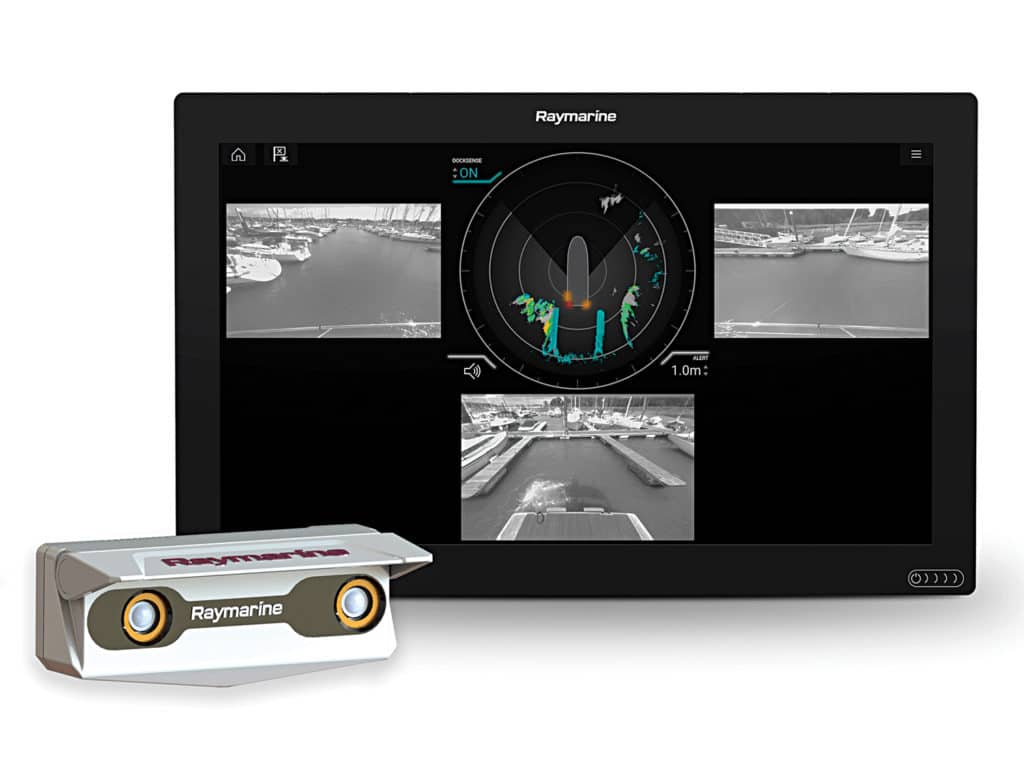
Likewise, Raymarine is stopping plenty of show-goers in their tracks with its DockSense Alert technology, which defangs docking operations using sensors, cameras and deep-machine learning to create a real-time 50-square-meter map of a boat’s surroundings. Once installed, DockSense Alert makes docking a matter of carefully threading into a berth using the boat’s networked chart plotter and its steering and throttle controls. DockSense Alert isn’t an automated experience but instead provides a skipper with a highly accurate map to help lower the stress level of the docking process, as well as alerts to anything that might cause the boat to go bump.
DockSense Alert is physically comprised of a Raymarine Axiom multifunction display that’s running Raymarine’s DockSense Alert app, a black-box DockSense Alert processor, and a customer’s choice of one ($6,000), three ($10,000) or five ($15,000) marinized stereo cameras that come bundled with built-in attitude and heading reference system (AHRS) sensors, as well as a separate Raymarine AHRS and GPS module. In all cases, the system’s AHRS and GPS sensors are used to remove the vessel’s roll, pitch and yaw from DockSense Alert’s map.
Unlike regular daylight cameras, DockSense Alert’s proprietary FLIR-built, dual-lens stereo cameras can accurately count, measure and recognize objects in three dimensions. This allows the stereo cameras to create “machine vision,” essentially meaning the system uses optics and software to deliver video-based analysis and inspection. DockSense Alert uses its machine-vision capabilities to scan through the entirety of each camera’s range for nonwater objects, and the system automatically alerts users about anything that could threaten their vessel.
DockSense Alert is a scalable, modular system that users can upgrade by networking additional plug-and-play cameras to the system’s black-box processor, which can accommodate a total of seven cameras. While seven-camera DockSense Alert installations are meant for the big-boat crowd, most cruisers sailing aboard more-modest steeds can get away with a one-, three- or five-camera setup This is because DockSense Alert can build its map and “remember” where nonwater objects are situated. So, provided the docking situation remains static (in other words, no unexpected marine traffic or wildly swinging docks), DockSense Alert doesn’t need to have a camera actively pointing at a particular scene to bolster situational awareness.
Pricing for the system was not yet available.
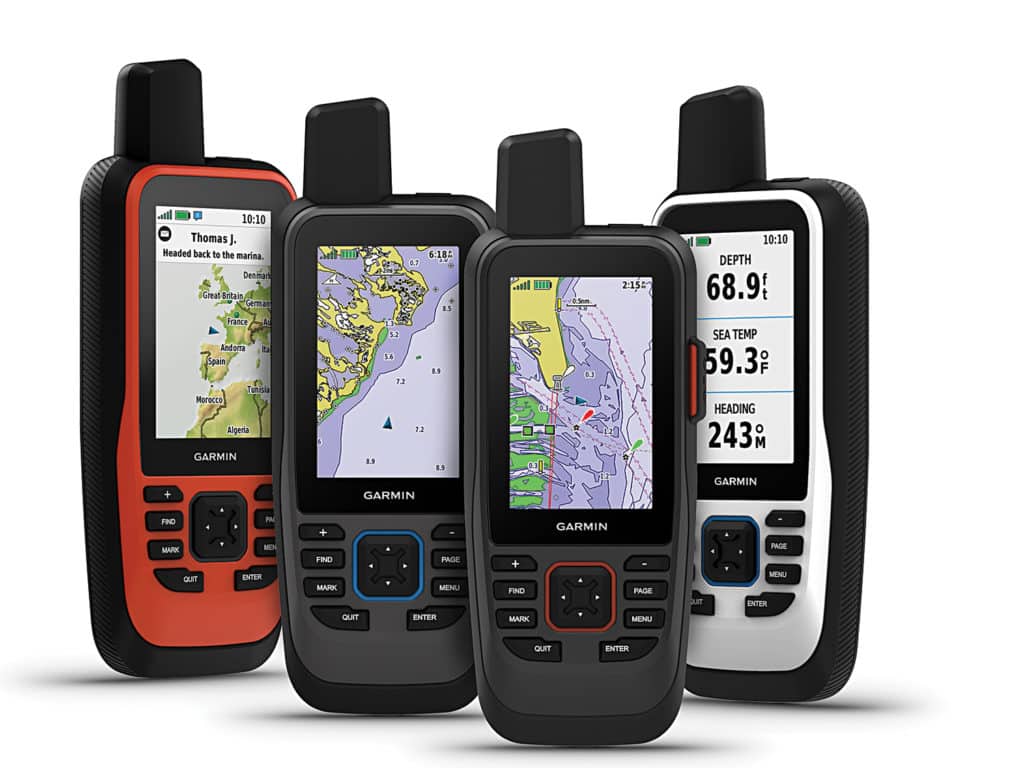
Garmin is never one to walk into a gunfight with a knife, and this year the technology giant unveiled four GPSMap 86 handheld GPS devices (starting at $400). These handhelds, which have the ability to stream data from a boat’s compatible Garmin-built chart plotter, all feature 1.5-inch-by-2.5-inch screens with 240-by-400-pixel resolution, rechargeable lithium-ion batteries and 16 gigabytes of solid-state storage, the latter of which contains the devices’ operating systems and cartography. Cooler still, all four of Garmin’s GPSMap86 models can be used to remotely control the boat’s compatible Garmin autopilot or Fusion stereo.
Now for the differences: The GPSMap 86s ($400) comes with a base map, and users can optionally purchase Garmin’s BlueChart g3 cartography, while the GPSMap 86sc ($450) comes with Garmin’s BlueChart g3 coastal cartography pre-loaded. The GPSMap 86i ($600) doesn’t include BlueChart g3 coastal cartography, but it delivers the ability to send and receive global satellite communications, including emergency alerts, using Iridium’s Short Burst Data Service (this requires a third-party data contract). Finally, Garmin’s flagship GPSMap 86sci ($650) includes the ability to send and receive satellite messages, while also coming pre-loaded with Garmin’s BlueChart g3 coastal cartography.
For readers who are familiar with Garmin’s inReach satellite communicator, the GPSMap 86i and 86sci devices essentially merge inReach’s communications capabilities with a handheld GPS’s ability to display cartography, drop a user’s location pin, and navigate. Additionally, these devices allow sailors, as well as their friends and family, to track and share their onboard adventures. Finally, the GPSMap 86i and 86sci can also deliver satellite weather forecasts, which is especially valuable for longer offshore passages. To be clear, these forecasts are not full GRIB files, which can be used for weather routing, but rather standard marine-weather forecasts that can help raise situational awareness about upcoming conditions.
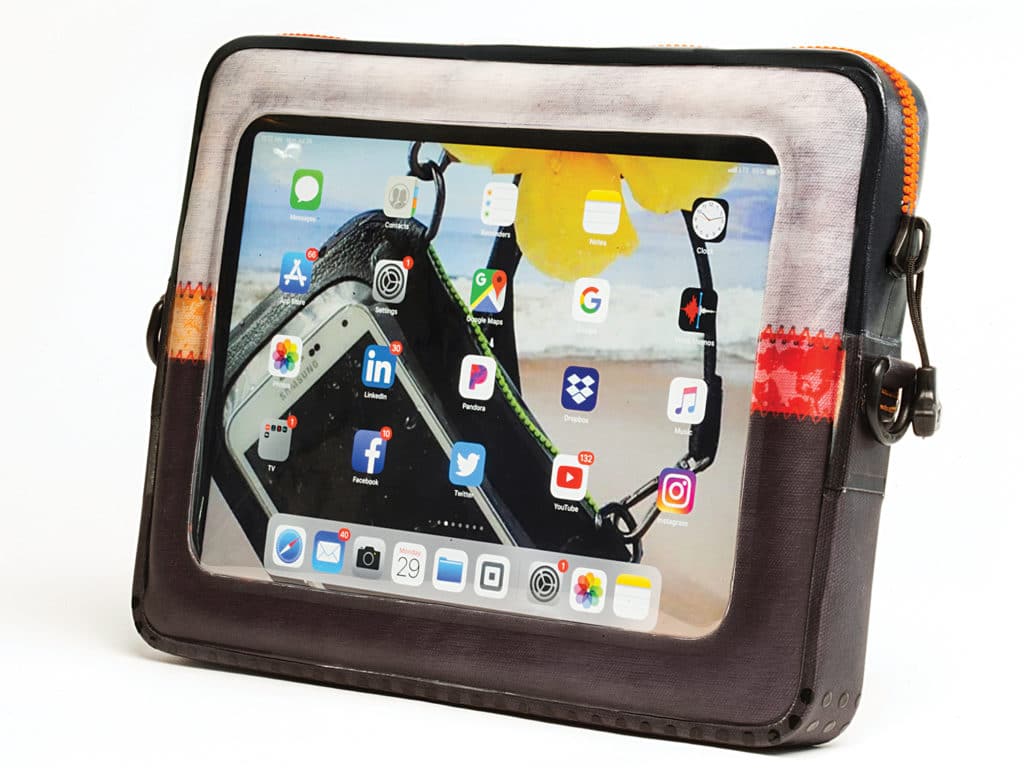
Speaking of onscreen navigation, Ugo realizes that many cruisers rely on their tablets as portable chart-plotter repeaters. The trouble, however, is that most consumer devices don’t fare well with salt and spray, which is why Ugo released its tablet case ($160), which delivers IP68 waterproof protection, a battery-life-enhancing airtight seal and positive buoyancy. The Tablet features Ugo’s fully waterproof proprietary technology, RF-welded seams and thermoplastic polyurethane construction. The case gives viewers full access to their device’s screen, while also providing anchors that can be used to secure the Tablet in a heaving seaway.
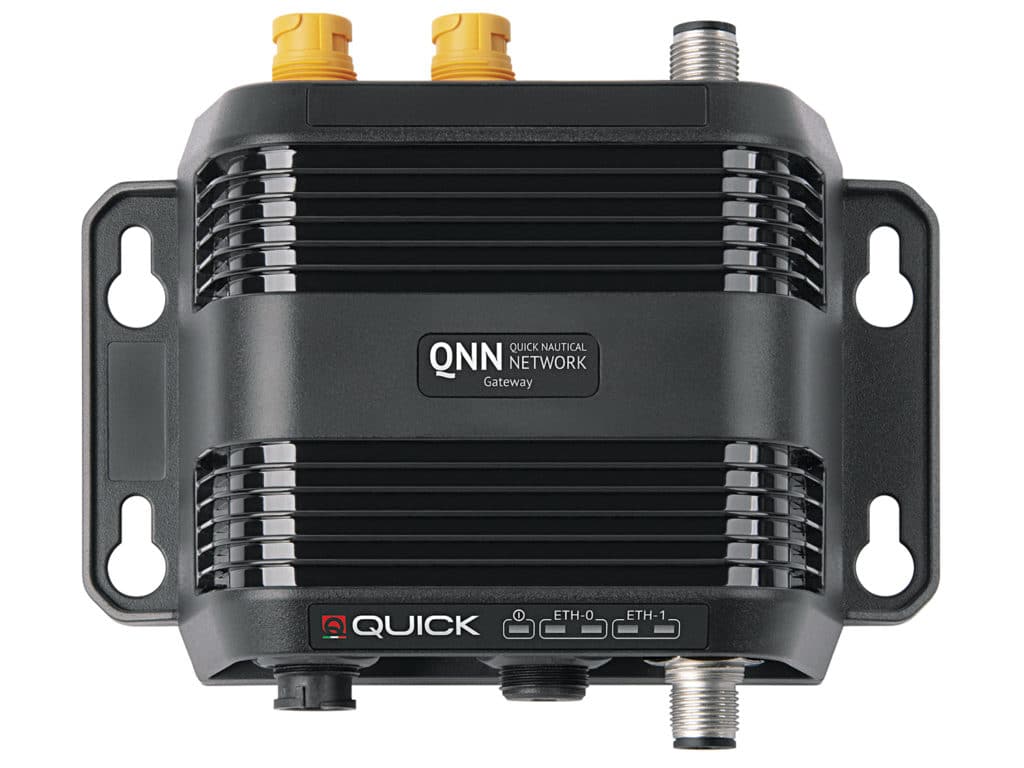
Wired connectivity was on Quick Spa’s mind when it introduced the Quick Nautical Network, or QNN gateway ($1,950), which allows the company’s range of marine devices to interface with contemporary, third-party chart plotters. This plug-and-play device sits on the network between the plotter and gear such as Quick’s thrusters, windlasses, battery chargers and lights, and converts their data to the HTML5 language that’s used by modern plotters. Additionally, the QNN gateway seamlessly shares any custom calibrations between the chart plotter and the networked devices.
FLIR Systems has long believed that clear imagery enhances any nav station, and the firm’s five new M300-series cameras do just that.
While the payload on each camera differs, all five M300 models use an internal motion sensor to stabilize imagery; all offer pan, tilt and zoom capabilities; and they are compatible with Raymarine’s ClearCruise augmented reality. ClearCruise superimposes AIS and chart data, such as buoys, onto the video imagery to greatly enhance what’s seen on the display screen.
The M300 series starts with the M300C ($6,500), which is a high-definition, low-light daylight camera that delivers a 30x optical zoom plus a 12x digital zoom, for a total zoom of 360x, digital stabilization, and variable fields of view. The M332 ($8,500) is a thermal-imaging camera that uses a FLIR Boson 320 thermal camera core to deliver 340-by-240-pixel image resolution, and a 24-degree field of view, which provides an ample view of one’s nearby surroundings. Stepping up in the M300 range is the M364 ($14,200), which is a thermal-imaging camera with a more powerful Boson 640 core that yields 640-by-480-pixel resolution and a 24-degree field of view.
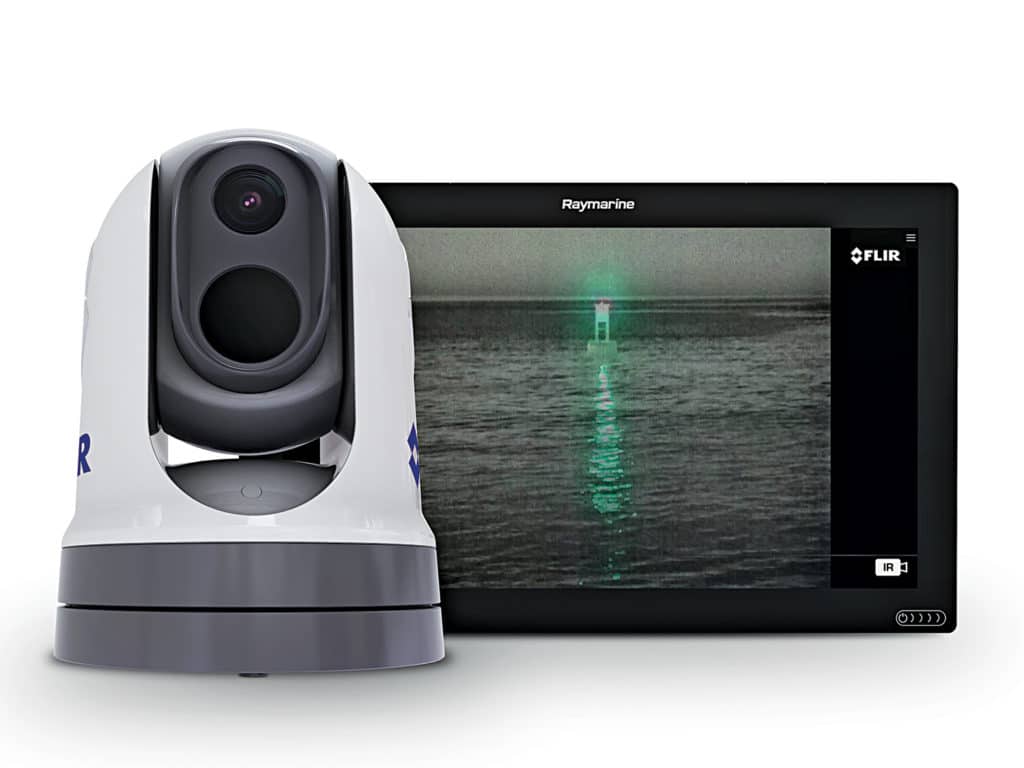
The higher end of the range includes FLIR’s M364C ($20,500), which uses both a high-definition, low-light daylight camera (with the same 30x optical zoom and 12x digital zoom as the M300C), and a Boson 640 thermal camera core and a 24-degree field of view. In addition, the M364C boasts FLIR’s Color Thermal Vision which, blends the video feeds from the camera’s HD visible-color video and its thermal-imaging camera to yield enhanced definition and identification of targets at night. For example, red or green buoys or running lights appear red or green, respectively, onscreen. The camera also features FLIR’s MSX technology, which borrows edges and borders from the camera’s visible-color video and blends this information with the camera’s thermal-imaging sensor to improve an operator’s ability to identify objects at a distance. Finally, the dual-payload M364C LR ($29,500) offers similar features but with an 18-degree field of view, which gives it better long-range performance.
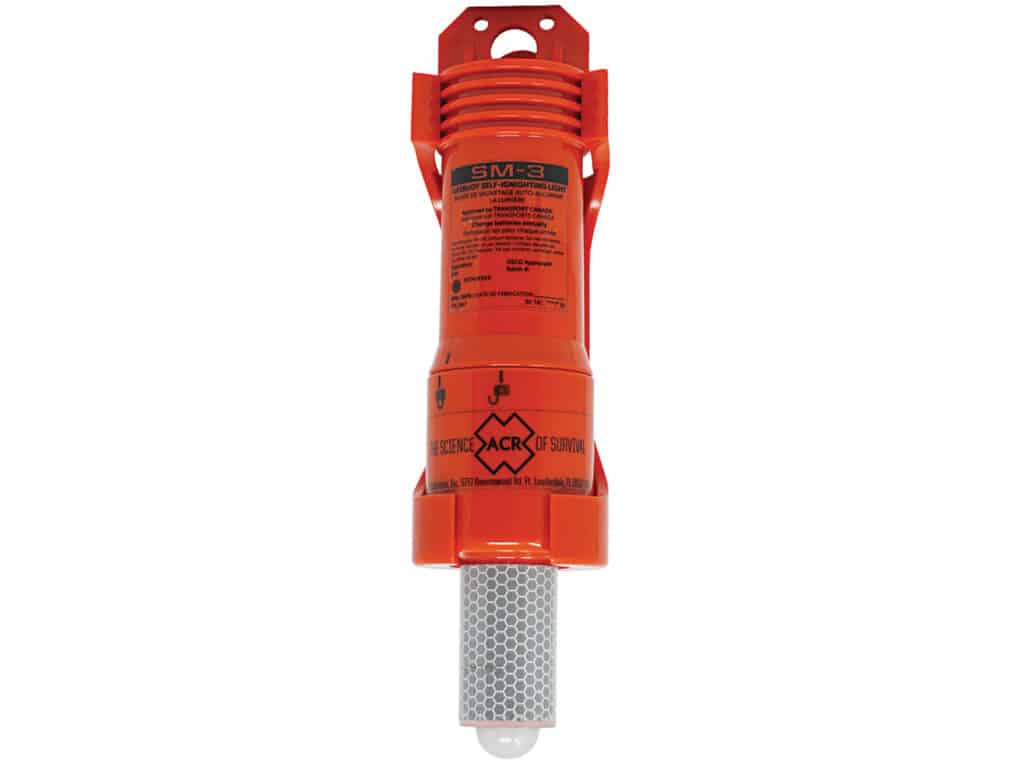
Even when skippers are equipped with the best electronics, things can happen. ACR Electronics understands the importance of facilitating self-rescues in the case of man-overboard emergencies, which is why the company released its SM-3 automatic buoy marker light. Much like horseshoe life buoys, SM-3 lights ($130) are designed to be thrown into the water if someone goes overboard. These ultrabright LED lights are water-activated and are designed to be self-righting. Once on, SM-3 lights deliver 360-degree visibility from up to 2 miles away, for up to 24 hours of continuous use at 30 degrees F, courtesy of two replaceable lithium batteries.
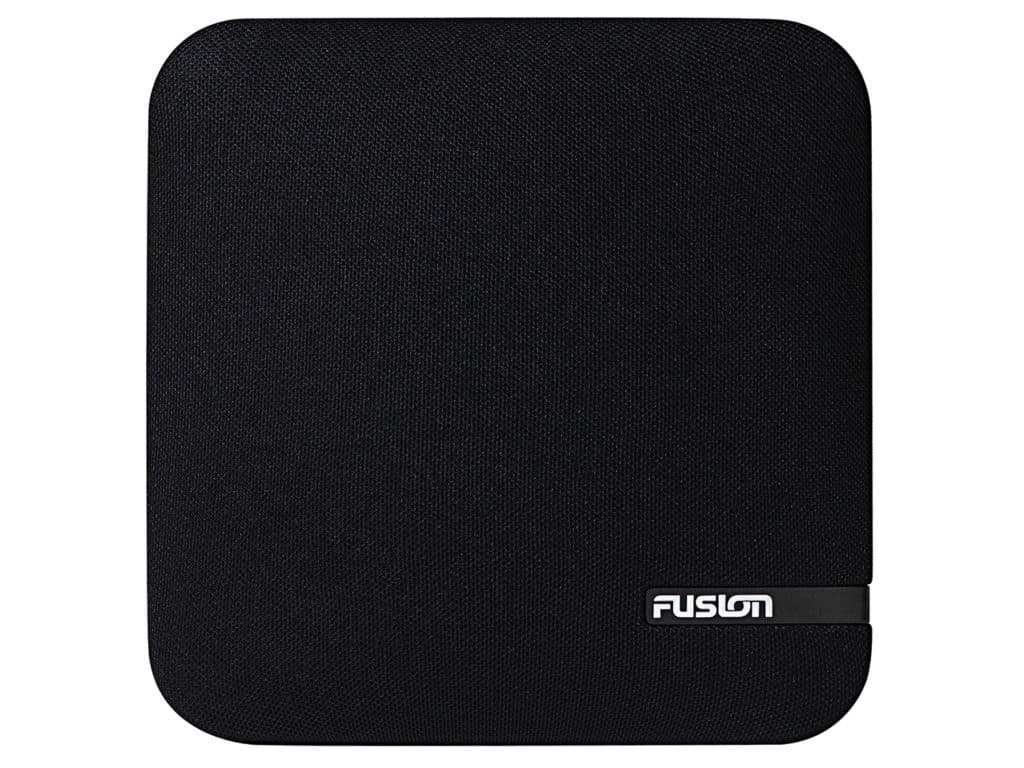
In the nice-to-have category of new electronics, Fusion Entertainment understands that for many sailors, cruising tunes are equally as important as other kit, and Fusion’s SM Series speakers are designed to deliver ear-pleasing acoustics in environments where mounting depth is at a premium. Fusion achieves great sound in a small package by employing a fully sealed enclosure that eliminates the need for space-sucking rear-speaker cones. SM Series speakers ($80) are square, 6.5-inch devices that deliver 100 watts of output; the new speakers are available with black or white fabric grilles, and customers also have their choice of two optional mounting spacers that let the speakers be mounted in wall corners or wall and ceiling corners; the latter lets them be angled down for improved acoustics.
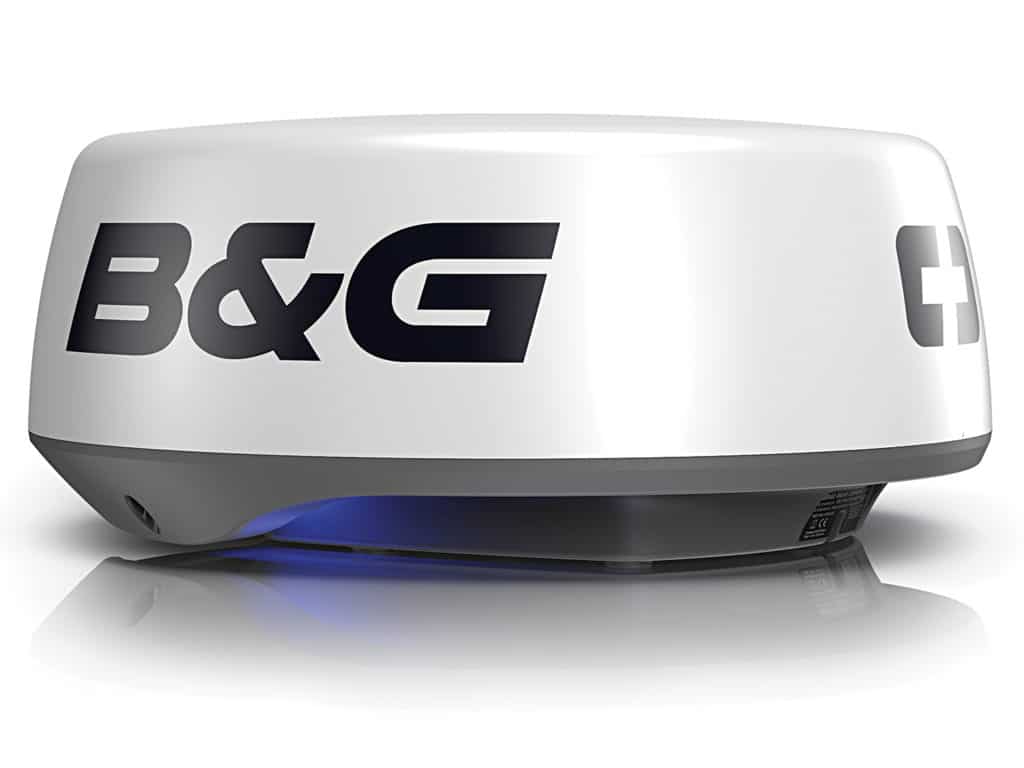
For mariners seeking a better view of things, B&G has unveiled two new solid-state, radome-enclosed radars, which they’ve dubbed the Halo20 and the Halo20+. Both feature 20-inch diameter radomes, making them suitable for smaller cruising sailboats. The Halos have dual-range capabilities, and both models deliver strong short-range performance. The sets weigh in at a modest 11 pounds, which doesn’t add much weight aloft. Additionally, both Halo radars offer B&G’s InstantOn technology—hit the switch, and they’re ready to read. They come with four operating modes (bird, harbor, offshore and weather) that automatically tweak the radar’s advanced signal processing to match the surroundings.
The Halo20 ($1,700) gives budget-minded sailors coverage out to 24 nautical miles, while also delivering mini automatic radar plotting aid (MARPA) tracking, which allows the Halo20 to track 10 manually selected radar targets (sailors operating in dual-mode can track 20 targets).
The Halo20+ ($2,200) delivers all of the Halo20’s feature sets but adds B&G’s proprietary VelocityTrack Doppler processing, which provides an instant visual indication as to whether an onscreen radar target is approaching or departing the scene, or if it’s stationary. VelocityTrack automatically color-codes each onscreen target, thus eliminating worries about hard-to-read targets. (While Halo20+ also employs manually set MARPA tracking capabilities, VelocityTrack is automatic; moreover, there’s no limit to the number of targets that VelocityTrack can color- code.) Additionally, Halo20+ performs a full 360-degree sweep at a rate of 1 hertz, or once per second, even at ranges up to 1.5 nautical miles, increasing close-range performance.
David Schmidt is CW’s electronics editor.
Resources
ACR Electronics: acrartex.com, 954-981-3333
B&G: bandg.com, 603-324-2042
FLIR: flir.com, 877-773-3547
Fusion Entertainment: fusionentertainment.com, 623-580-9000
Garmin: garmin.com, 800-800-1020
Quick Spa: quickitaly.com, 340-075-6422
Raymarine: raymarine.com, 603-324-7900
Ugo: ugowear.com, 952-210-1648
Vesper Marine: vespermarine.com, 609-246-5067








